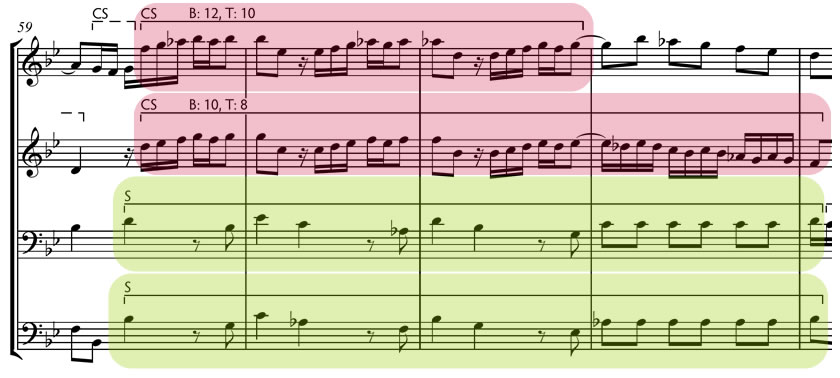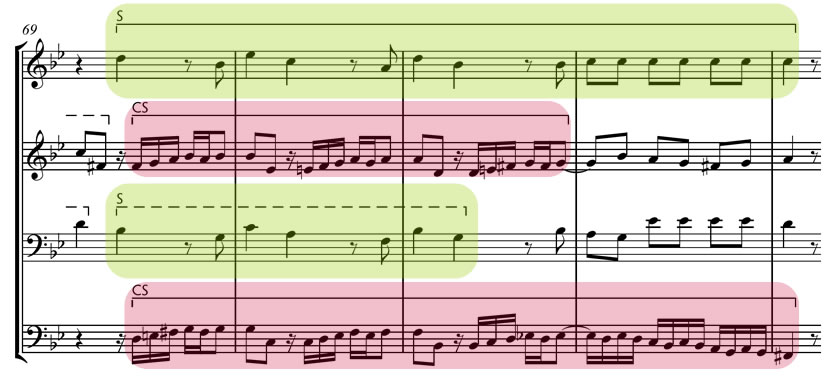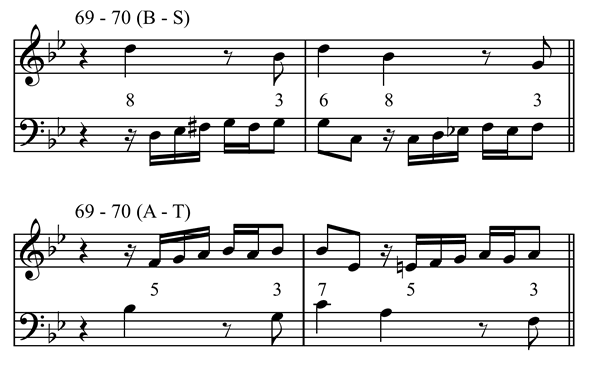Invertible Counterpoint in Bach's Fugue BWV 885
José Rodríguez Alvira
Double subjects and countersubjects
In measures 59 to 62 the subject is presented by the tenor and bass and the countersubject in the soprano and alto:

Here are the inversions used in these measures:
| Voices | Inversion |
|---|---|
| Bass and alto | 10th |
| Bass and soprano | 12th |
| Tenor and alto | 8ve |
| Tenor and soprano | 10th |
Measures 69 to 72 are similar but the voices are organized differently and the key is G minor. The soprano and tenor present the subject (incomplete in the tenor) while the bass and alto present the countersubject:

How should we look at these measures? Like an inversion of measure 59? If so, here are how the voices move:
| Voices in measure 59 | Voices in measure 69 |
|---|---|
| bass | to the tenor |
| tenor | to the soprano |
| alto | to the bass |
| soprano | to the alto |
If we apply a second inversion at the octave to the inversions from measure 59 we get some additional examples of inversion at the 13th:
| Voices in measure 59 | Inversion | Move in measure 69 to | Second inversion | Resulting inversion |
|---|---|---|---|---|
| bass and alto | 10th | tenor and bass | 8ve | 13th |
| tenor and alto | 8ve | soprano and bass | 8ve | 8ve |
| tenor and soprano | 10th | soprano and alto | 8ve | 13th |
Also note that the bass and soprano in measure 69 are identical to measure 9 (second subject in the exposition):

And the tenor and alto in measure 69 are the inversion at the 12th of these two voices:

A simpler explanation is that the bass is doubled at the third by the alto while the soprano doubles the tenor. A labyrinth of inversions of inversions seems to take us back to where we started. It is easy to get lost in Bach's labyrinth...